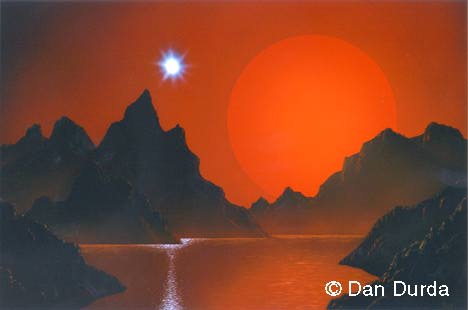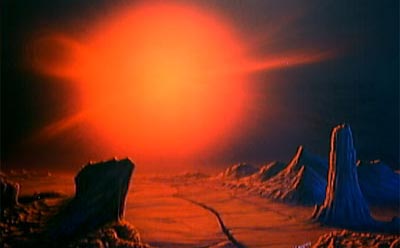| Table of Contents: Introduction Classical Observations of Mercury Einstein and Relativity Applying Relativity to Mercury's Orbit Further Applications of Relativity Bibliography |
Around 1846 the
French mathematician Urbain le Verrier, the German
astronomer Johann Galle, and the English astronomer and
mathematician John Couch Adams discovered the planet
Neptune by observing how Uranus' orbit differed from its path as predicted by Kepler's Laws of Planetary
Motion and hypothesizing that the deviance was due to
the gravitational influence of another planet yet
unobserved. Mercury's orbit, like Uranus', had characteristics that could not be easily accounted for by the gravity of the known nearby planets. In 1860 le Verrier proposed that a similar solution could be applied to the procession of Mercury's orbit. He named the sunward planet Vulcan, after the Roman god of metal-smithing and volcanoes, appropriate for a world so close to the Sun's warm embrace. Over the following years there were many alleged sightings of Vulcan, either transits of an object in front of the Sun or fleeting glimpses of something reflecting light during a solar eclipse. Most of those were too small to have enough gravity to do the job, or were only seen once and then never again. Le Verrier suggested that Vulcan might be the largest in a belt of asteroids inside Mercury's orbit. After 1915, and the publication of Albert Einstein's Theory of Relativity the majority of interest in searching for Vulcan waned. Some photographic plates from an eclipse in 1970 showed an object between Mercury and the Sun, but that is currently believed to have been just a comet. Interest in Vulcan still lingers in the occult community, as do things like Counter-Earth, Planet X, Lemuria and Mu, and all sorts of other hypotheses abandoned by science at large. |
 Image source: https://www.boulder.swri.edu/~durda/paintings.html  Image Source:http://www.technovelgy.com/ct/Science-Fiction-News.asp?NewsNum=359  Image source: http://spaceart1.ning.com/photo/dying-world  Image source: http://www.psi.edu/about/staff/hartmann/pic-cat/esplanets.html |